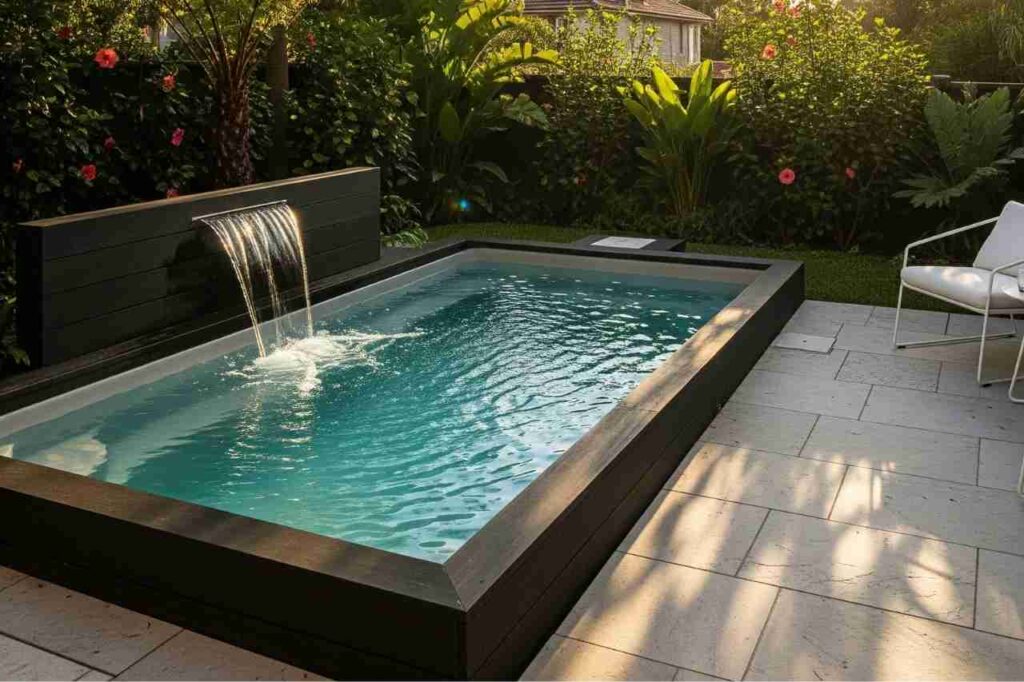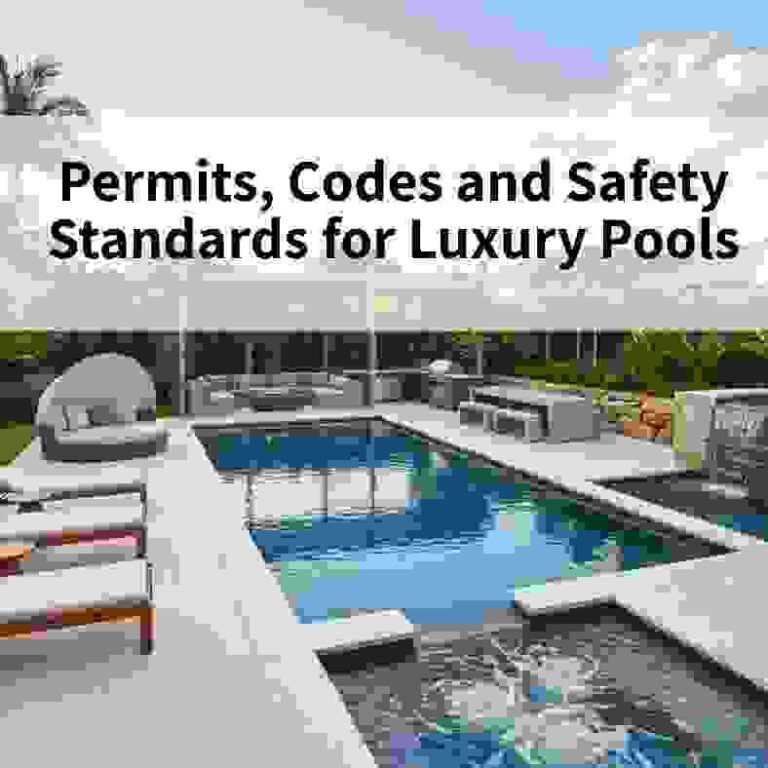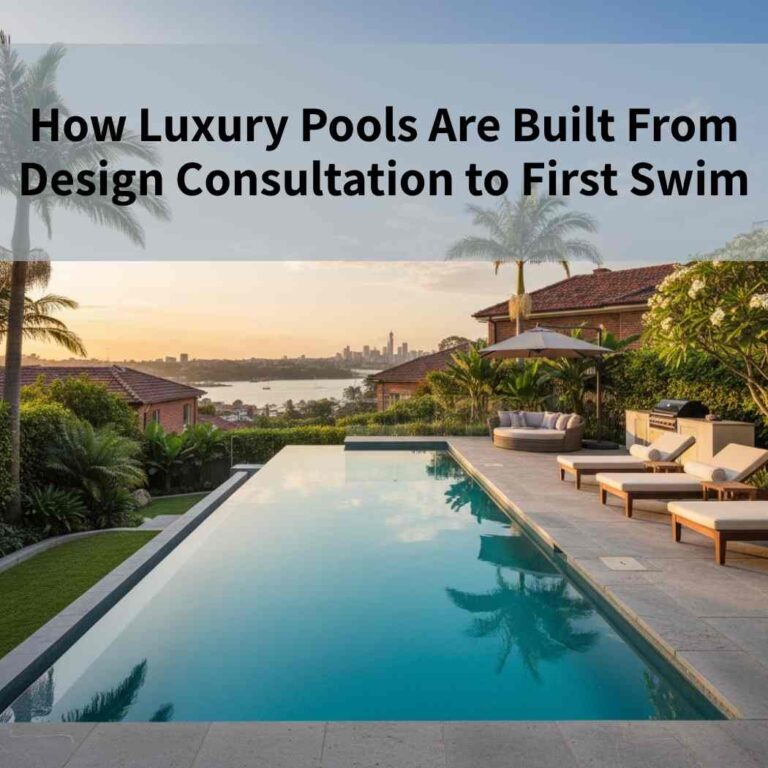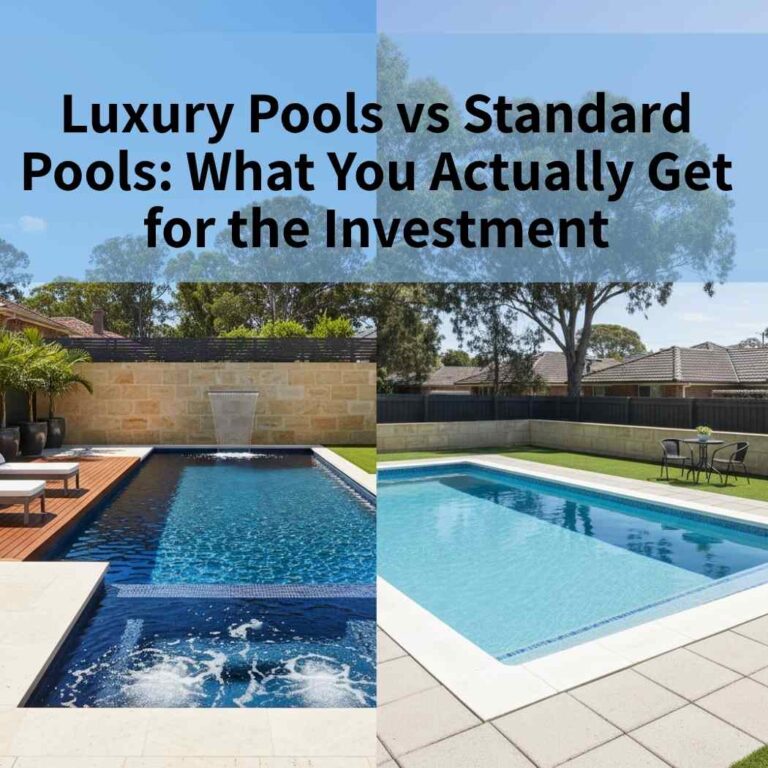At Plunge Pools Sydney, we’ve helped families turn small yards into resort-style retreats. In this guide, you’ll learn:
- Benefits of above ground plunge pools
- Hidden costs and durability
- Rules and approvals in NSW
- How they compare to in-ground options
- Who gets the most value
Table of Contents
ToggleThe Benefits of Above Ground Plunge Pools

Above ground plunge pools are popular in Sydney because they’re affordable, fast to set up, and fit small yards. Key benefits include:
- Low cost – They’re cheaper than inground plunge pools.
- Quick installation – No major digging needed.
- Flexibility – Above ground designs can be installed in tight or sloping spaces.
- Compact luxury – They are sleek look perfect for Sydney’s tight backyards.
- Family enjoyment – They’re a perfect pool for bringing together family and friends to cool off or relax with ease.
The Hidden Costs and Long-Term Considerations
Running an above ground plunge pool in Sydney costs $600–$1,800 per year for chemicals, power, and filters. Long-term, expect to budget for:
- Running expenses like chemicals, filters, and electricity.
- Liner or surface replacement every 7–10 years, depending on the material.
- Seasonal care — you’ll need to cover or winterise your pool to keep it clean and protected during cooler months.
That said, above ground plunge pools generally mean less maintenance than larger in-ground pools, which is a big plus for busy Sydney families.
Durability and Materials
Above ground plunge pool lifespan depends on the material — usually 15 years or more for fibreglass and 20+ years for precast concrete. Both options are strong enough for above ground installs and hold up well in Sydney’s climate.
| Pool type | Average life | Notes |
|---|---|---|
| Fibreglass | 15–20 yrs | Lightweight, smooth finish, low chemical use, quick to install |
| Precast concrete | 20+ yrs | Heavy-duty shell, can be installed above ground or inground |
Choosingquality materials and working with a licensed installer ensures fewer hassles and a longer pool life. Fibreglass and precast concrete plunge pools, when well maintained, can last decades, giving Sydney homeowners peace of mind and lasting value.
Regulations and Space Limitations
In Sydney, before you install an above ground pools, you must follow NSW pool laws:
- Local council approvals may be needed depending on size or location.
- Pool fencing laws in NSW require that every pool, above ground or in-ground, have a compliant safety barrier at least 1.2 m high with a self-closing gate.
- Clearance space is needed from boundaries, utilities, and trees.
Our team helps homeowners handle council approvals and safety rules so installation runs smoothly.
Above Ground vs InGround Plunge Pools
| Factor | Above Ground | In-Ground | Best For |
|---|---|---|---|
| Install time | 1–2 weeks | 4–8 weeks | Quick setups |
| Cost | $10k–25k | $35k–70k+ | Budget vs luxury |
| Maintenance | Low–medium | Medium–high | Busy families |
| Property value | Moderate | Higher | Resale impact |
Both types have their advantages, but here’s how they compare:
- Installation: Above ground is quicker and less disruptive. In-ground is more permanent and may suit luxury homes.
- Cost: Above ground plunge pools cost significantly less upfront. In-ground pools are a long-term investment.
- Maintenance: Both require cleaning and balancing, but in-ground pools may have higher ongoing costs.
- Resale value: In-ground pools can add more to property value, but above ground pools still improve lifestyle appeal, especially in Sydney’s outdoor living culture.
Pick above ground if you want affordable, quick, low-fuss fun. Pick in-ground if you want a permanent feature that boosts resale.
Who Gets the Most Value?
Above ground plunge pools are ideal for:
- Families with kids who want safe summer fun without overspending.
- Couples or professionals looking for a low-maintenance way to relax.
- Homeowners with small backyards where space is limited.
- Budget-conscious buyers who want aussie resort-style living without luxury costs.
If you’re renting, an above ground option can even be removed or relocated if needed.
Conclusion
So, are above ground plunge pools worth it? Above ground plunge pools are worth it for many Sydney homes. They’re budget-friendly, fast to install, and perfect for tight yards. Want to explore your options? Get a free quote from Plunge Pools Sydney and turn your backyard into a private retreat
FAQs
How much does an above-ground plunge pool cost in Australia, including installation and ongoing maintenance?
An above ground plunge pool in Australia costs $10k–$25k installed, with extras (decking, fencing, permits) pushing Sydney setups closer to $35k. Running costs are $600–$1,800 per year for chemicals, filters, and power.
Do above-ground plunge pools add value to my property in Sydney or other urban areas?
Above-ground plunge pools generally offer limited resale value, particularly in compact urban areas where buyers prioritise low-maintenance living. Real-estate professionals warn that above-ground pools are often seen as liabilities rather than assets, although in high-end neighbourhoods where pools are standard, the impact may be more neutral.
Are above-ground plunge pools safe for families with children and pets?
Yes—provided strict compliance with Australian safety standards, including secure fencing, self-closing gates and compliant filtration systems. Proper supervision and maintenance of safety features are essential to reduce risks for children and pets.
How energy-efficient are above-ground plunge pools, and can they be fitted with heating systems?
Above-ground plunge pools can be fitted with energy-efficient heating systems like heat pumps, which also offer cooling options. Solar heating is another eco-friendly choice that can significantly lower energy usage. Running costs for heating systems are moderate, especially when using efficient technologies.
Are there sustainable or eco-friendly above-ground plunge pool options available in Australia?
Yes—eco-friendly choices include solar heating systems and energy-efficient heat pumps, which reduce both environmental impact and running costs. Choosing materials like fibreglass, which require fewer chemicals and less frequent resurfacing, also enhances sustainability and lowers long-term maintenance costs.




